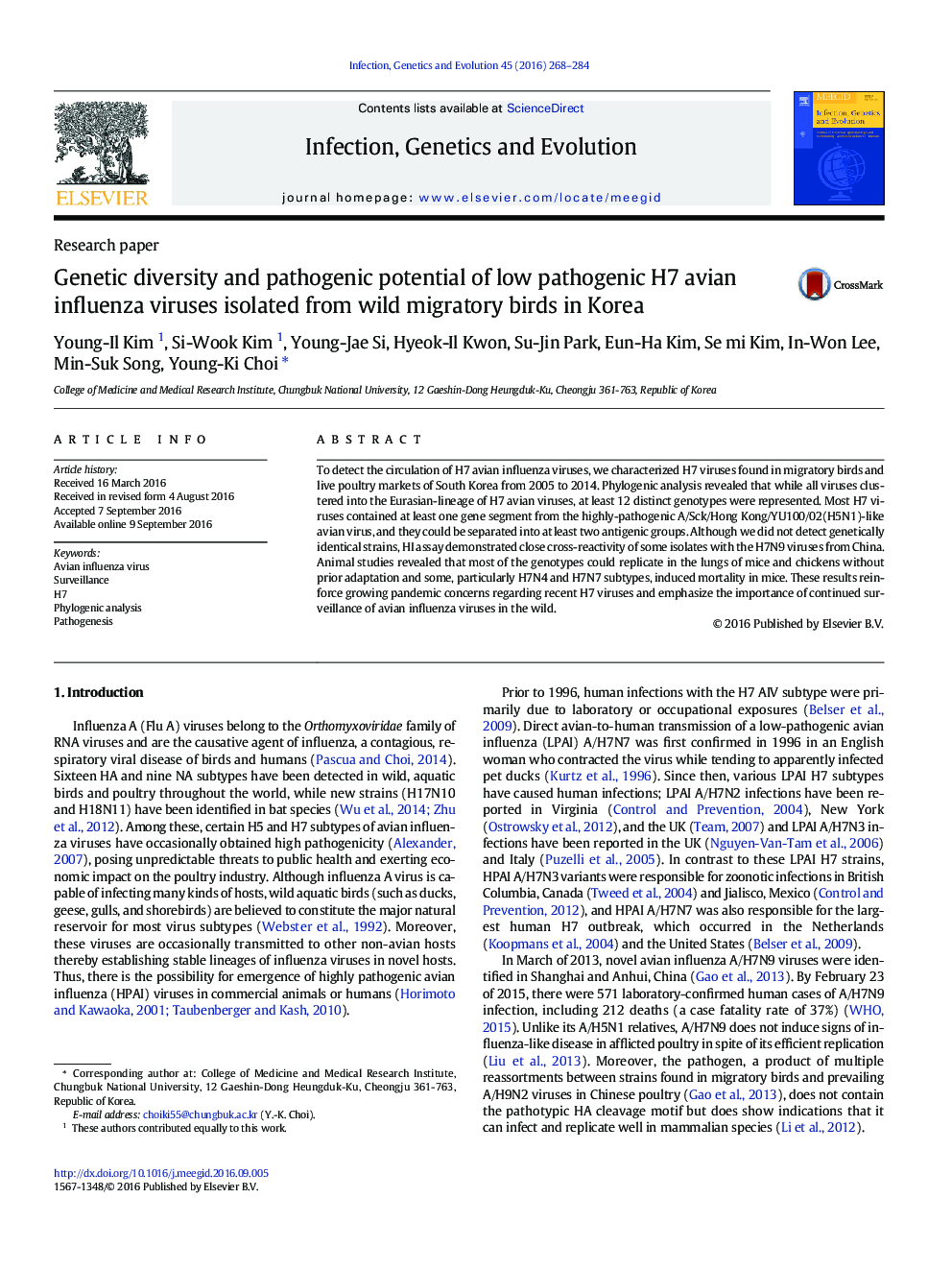| Article ID | Journal | Published Year | Pages | File Type |
|---|---|---|---|---|
| 2822879 | Infection, Genetics and Evolution | 2016 | 17 Pages |
Abstract
To detect the circulation of H7 avian influenza viruses, we characterized H7 viruses found in migratory birds and live poultry markets of South Korea from 2005 to 2014. Phylogenic analysis revealed that while all viruses clustered into the Eurasian-lineage of H7 avian viruses, at least 12 distinct genotypes were represented. Most H7 viruses contained at least one gene segment from the highly-pathogenic A/Sck/Hong Kong/YU100/02(H5N1)-like avian virus, and they could be separated into at least two antigenic groups. Although we did not detect genetically identical strains, HI assay demonstrated close cross-reactivity of some isolates with the H7N9 viruses from China. Animal studies revealed that most of the genotypes could replicate in the lungs of mice and chickens without prior adaptation and some, particularly H7N4 and H7N7 subtypes, induced mortality in mice. These results reinforce growing pandemic concerns regarding recent H7 viruses and emphasize the importance of continued surveillance of avian influenza viruses in the wild.
Related Topics
Life Sciences
Agricultural and Biological Sciences
Ecology, Evolution, Behavior and Systematics
Authors
Young-Il Kim, Si-Wook Kim, Young-Jae Si, Hyeok-Il Kwon, Su-Jin Park, Eun-Ha Kim, Se mi Kim, In-Won Lee, Min-Suk Song, Young-Ki Choi,
